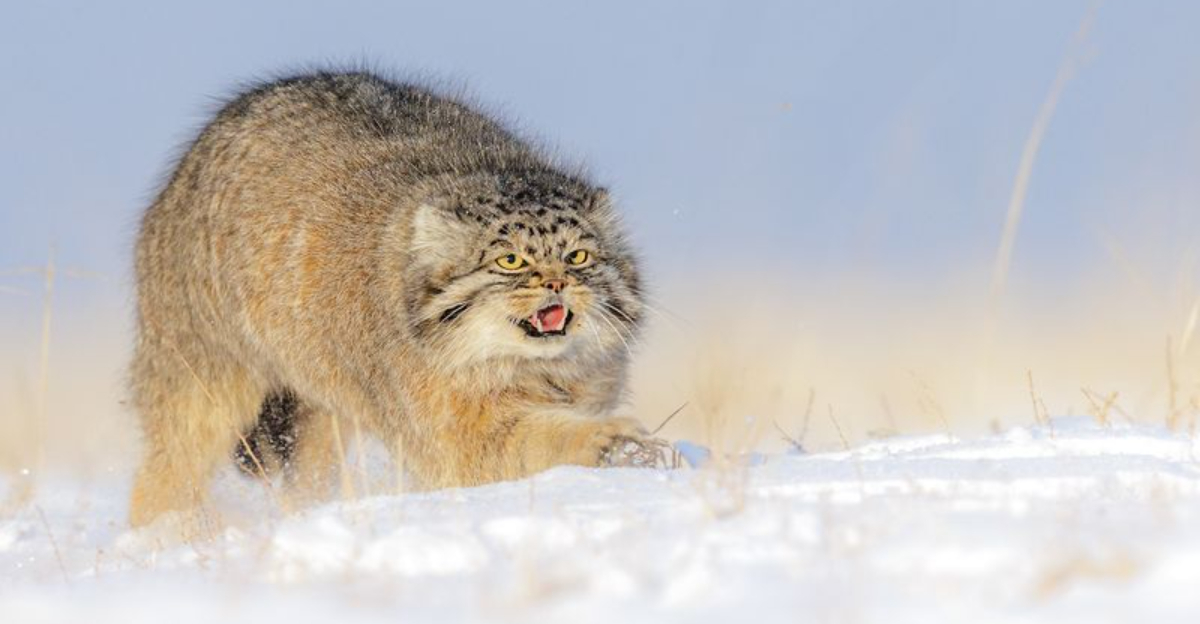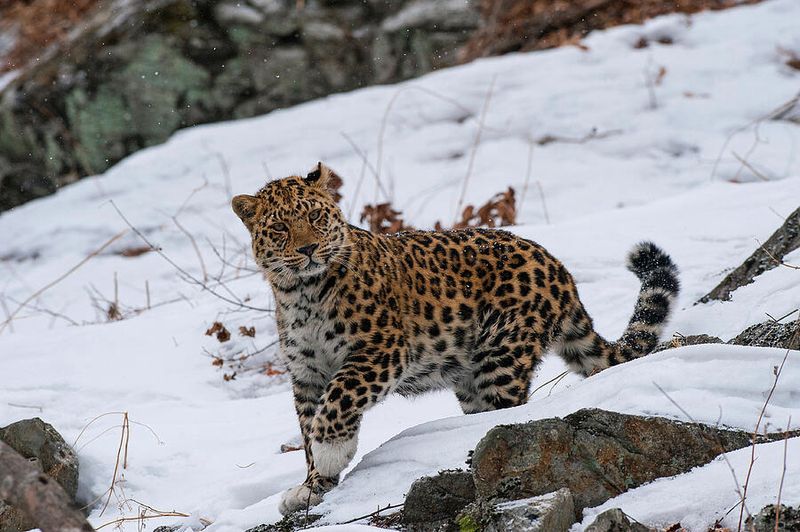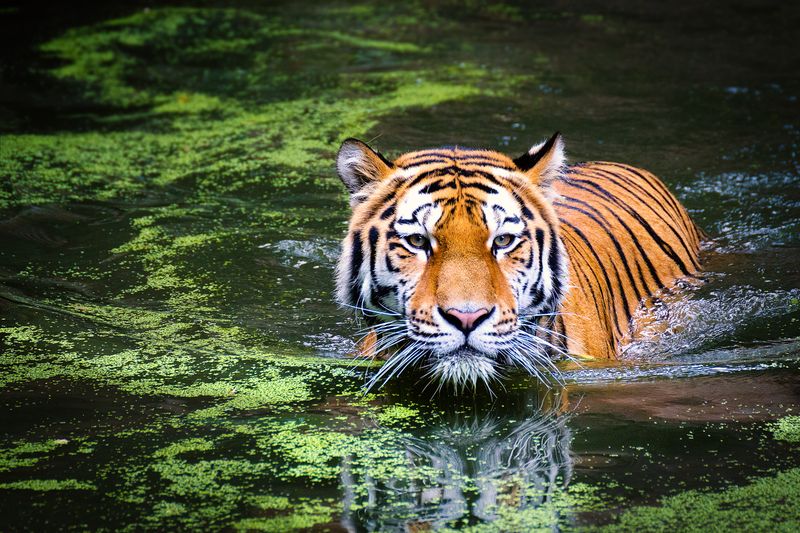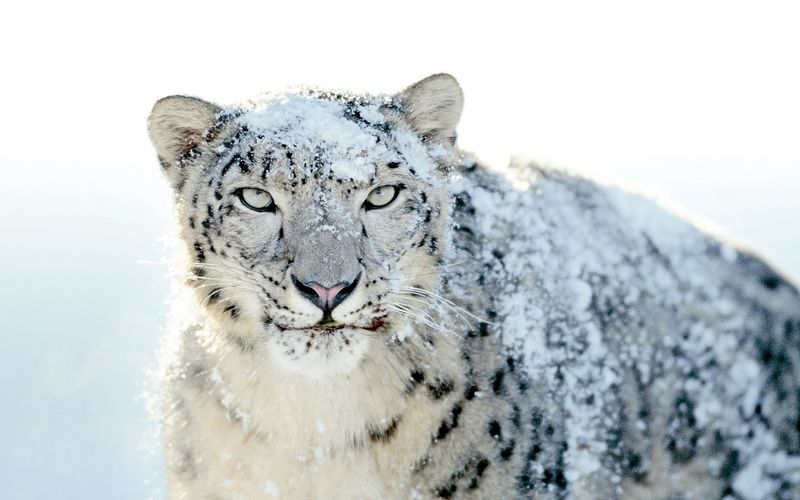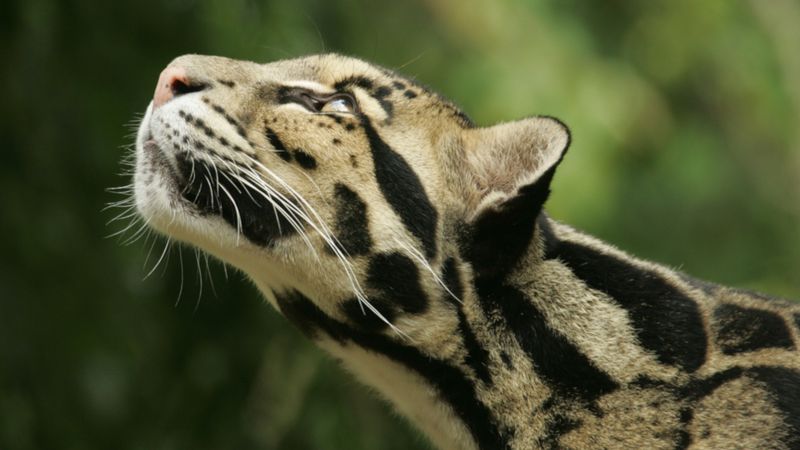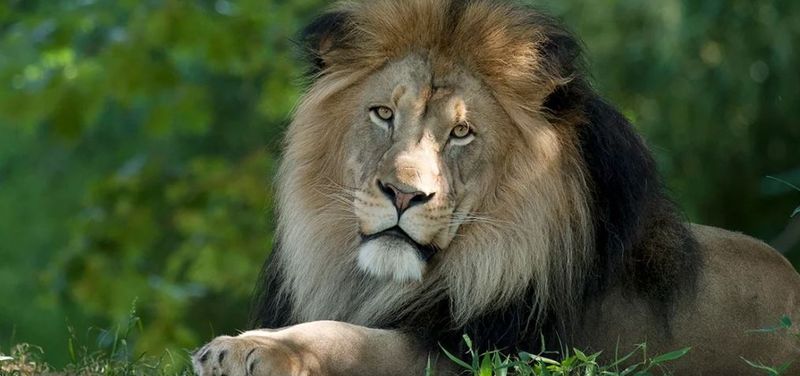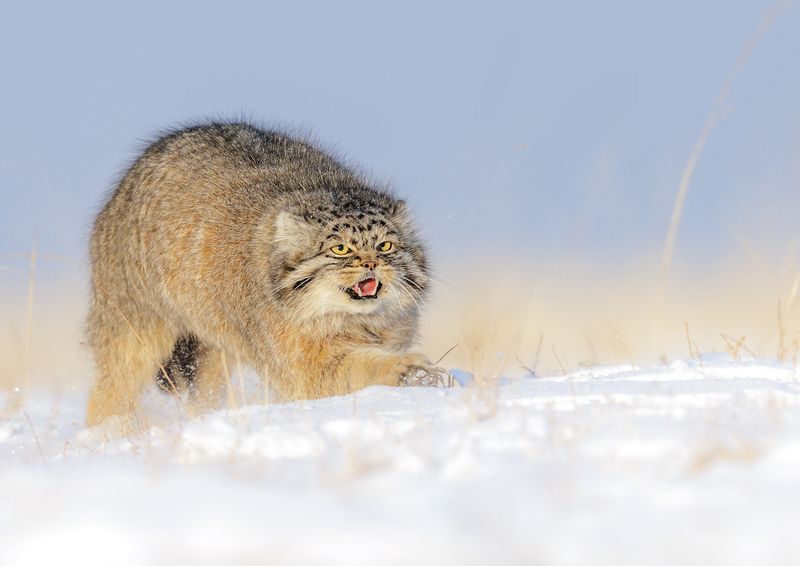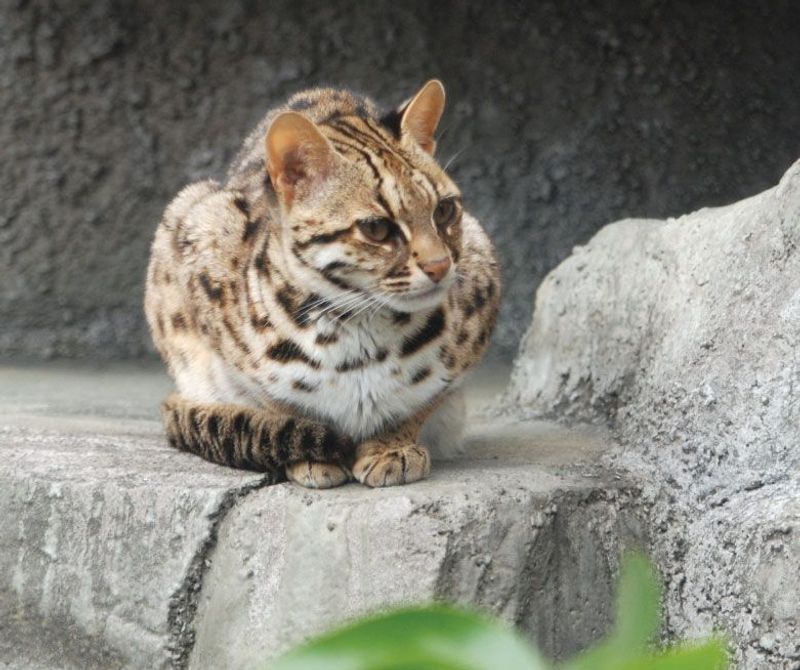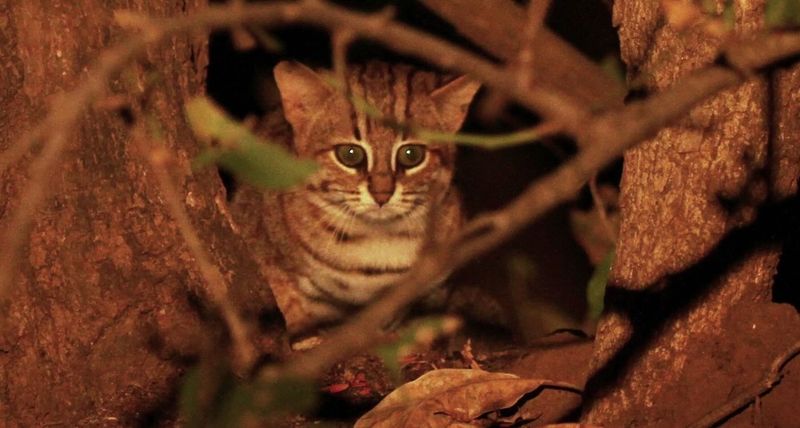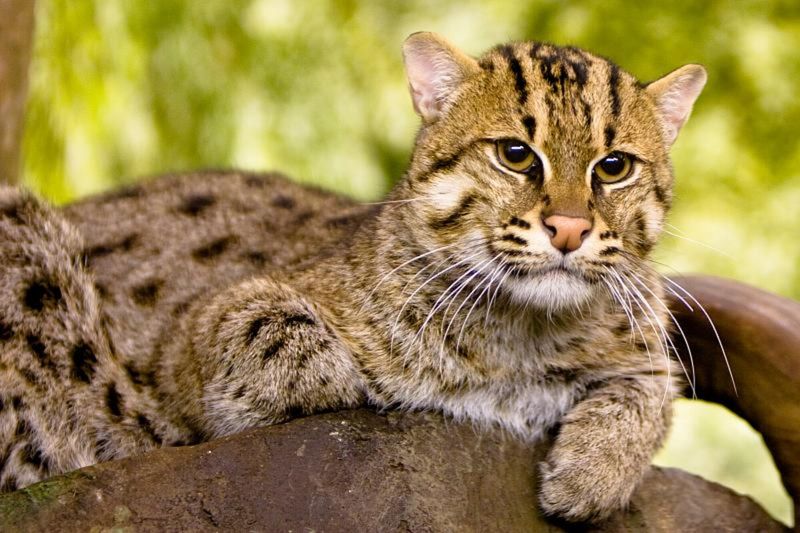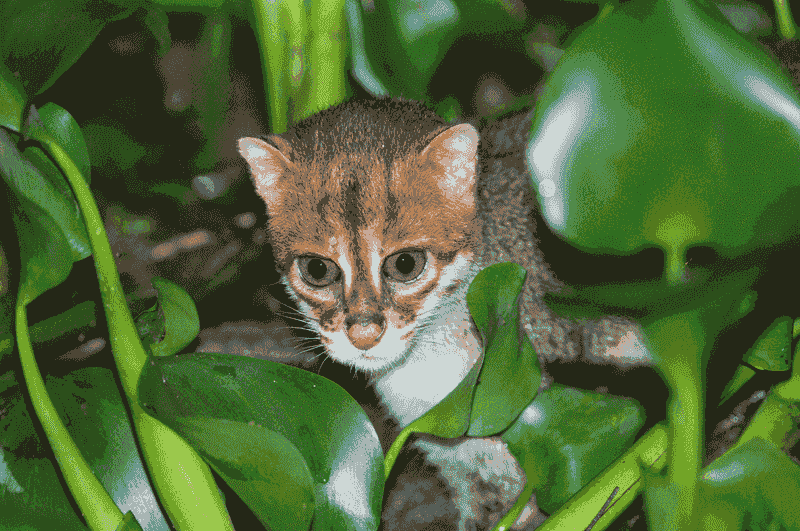📖 Table of Content:
- 1. Amur Leopard (Panthera pardus orientalis)
- 2. Bengal Tiger (Panthera tigris tigris)
- 3. Snow Leopard (Panthera uncia)
- 4. Clouded Leopard (Neofelis nebulosa)
- 5. Asiatic Lion (Panthera leo persica)
- 6. Pallas’s Cat (Otocolobus manul)
- 7. Leopard Cat (Prionailurus bengalensis)
- 8. Rusty-Spotted Cat (Prionailurus rubiginosus)
- 9. Fishing Cat (Prionailurus viverrinus)
- 10. Flat-Headed Cat (Prionailurus planiceps)
Asia is home to some of the most breathtaking and diverse landscapes on Earth—towering mountain ranges, dense tropical rainforests, arid deserts, and sprawling grasslands. Hidden within these wild environments are equally stunning creatures: the wild cats of Asia. From snow-covered Himalayan cliffs to the humid mangroves of Southeast Asia, these elusive predators have adapted to thrive in some of the planet’s most challenging and remote habitats.
While names like tigers and leopards might be familiar, Asia’s wild cat family includes an incredible variety of species—many of which are lesser-known but equally fascinating. Some are among the largest and most iconic cats in the world, while others are small, secretive, and rarely seen by humans. Whether they’re sprinting across the plains or silently stalking prey in treetops, each of these cats plays a vital role in maintaining the balance of their ecosystem.
Get ready to meet high-altitude hunters, fish-loving felines, and miniature predators you’ve probably never heard of. These cats are not just wildlife—they’re living symbols of Asia’s rich natural heritage.
1. Amur Leopard (Panthera pardus orientalis)
Rarely seen in the wild, the Amur leopard is a ghost of the Russian Far East. Thriving in snowy, mountainous regions, it has developed thick, luxurious fur for insulation. This critically endangered cat is also the most solitary of its kind, preferring remote and rugged habitats. What sets it apart is its remarkable agility—capable of leaping over 10 feet horizontally. In winter, its light coat helps it blend seamlessly into the snow. With only around 100 individuals left in the wild, conservation efforts are crucial. It hunts primarily at night, targeting deer and smaller mammals. Survival for this elusive predator depends on habitat protection and anti-poaching laws.
2. Bengal Tiger (Panthera tigris tigris)
Roaming the jungles of India and beyond, the Bengal tiger is one of Asia’s most iconic creatures. Standing as the largest tiger subspecies, it embodies strength, stealth, and grace. Its orange coat, striped like shadowy flames, offers perfect camouflage in dense forests. Tigers like this are apex predators, vital to ecosystem balance. Revered in local culture, it features prominently in folklore and national identity. Despite its fame, habitat loss and conflict with humans threaten its survival. Females raise cubs alone, fiercely protecting them until they can hunt. A symbol of both beauty and vulnerability, the Bengal tiger remains a focus of global conservation.
3. Snow Leopard (Panthera uncia)
High in the mountains of Central Asia, the snow leopard reigns over a frozen domain. Perfectly adapted to frigid altitudes, it has thick fur and wide paws for snow travel. Its long, fluffy tail aids in balance and warmth during alpine hunts. Known as the “ghost of the mountains,” it’s incredibly elusive and rarely spotted. The snow leopard preys on ibex and mountain sheep, often ambushing from cliffs. Living at elevations above 9,000 feet, it endures harsh climates with ease. In local cultures, it holds spiritual significance and is seen as a symbol of resilience. Protection through eco-tourism and community engagement has become key to its survival.
4. Clouded Leopard (Neofelis nebulosa)
Unlike its larger cousins, the clouded leopard thrives in the treetops of Southeast Asia. Equipped with short legs and long tails, it moves through branches with cat-like confidence. Its distinctive cloud-shaped spots give it its name and help with camouflage. Surprisingly, it has some of the longest canine teeth relative to skull size of any wild cat. As a mid-sized predator, it hunts monkeys, birds, and small deer. Very little is known about its behavior in the wild due to its secretive nature. Deforestation poses a serious threat to its already fragmented population. Conservationists are racing to understand and protect this mysterious feline.
5. Asiatic Lion (Panthera leo persica)
Once ranging across the Middle East and India, the Asiatic lion now survives in just one forest. Smaller and less maned than its African cousin, it still commands great presence. A distinctive belly fold and shorter mane set it apart visually. These lions form smaller, tighter prides compared to African lions. Most of them live in Gujarat’s Gir Forest, protected by conservation zones. Poaching and disease outbreaks remain constant concerns. Despite their limited range, they’ve shown signs of population recovery. Continued political and ecological support is essential to prevent another decline.
6. Pallas’s Cat (Otocolobus manul)
Found in the windswept steppes of Central Asia, Pallas’s cat is a master of camouflage. Its dense fur makes it appear round and stout, ideal for blending into rocky terrain. Unlike most cats, it has a flattened face and expressive, piercing eyes. Despite its adorable appearance, it’s a skilled ambush predator. It hunts small mammals like pikas and gerbils, relying on stealth rather than speed. Active mostly at dawn and dusk, it avoids both humans and predators. Because of its low tolerance for captivity, it’s hard to study or breed in zoos. Climate change and rodent poisoning are modern threats to its survival.
7. Leopard Cat (Prionailurus bengalensis)
Small yet fierce, the leopard cat is widely distributed across East and Southeast Asia. Its coat resembles that of a leopard, but it’s no larger than a domestic cat. Agile and arboreal, it’s as comfortable in trees as it is on the ground. These cats are highly adaptable, often seen near farms and villages. They play an important role in rodent control, benefiting local agriculture. Sometimes mistaken for domestic hybrids, they are the wild ancestors of Bengal cats. Despite being common, they face danger from habitat fragmentation. Their survival depends on maintaining forest corridors and rural coexistence.
8. Rusty-Spotted Cat (Prionailurus rubiginosus)
Among the smallest wild cats in the world, the rusty-spotted cat is no bigger than a large kitten. Native to India and Sri Lanka, it lives in forests, grasslands, and even near human settlements. Its grayish coat is dotted with rusty-colored spots, hence its name. Despite its size, it’s a bold and energetic hunter, preying on rodents and birds. It climbs trees and even swims when necessary. Being nocturnal, it stays hidden during the day. Sightings are rare, adding to its mysterious reputation. Conservation efforts are increasing as more is discovered about its elusive habits.
9. Fishing Cat (Prionailurus viverrinus)
Unlike most of its feline relatives, the fishing cat has a passion for water. Found in the wetlands and mangroves of South and Southeast Asia, it thrives near rivers and swamps. Its partially webbed feet and water-resistant fur make it an excellent swimmer. As its name suggests, it hunts fish, frogs, and crustaceans. Short, stocky limbs and a muscular build give it surprising strength. Though once widespread, wetland destruction has caused a steep decline in numbers. It’s often active at night, prowling quietly through reeds. Protected wetlands and awareness campaigns are crucial to its future.
10. Flat-Headed Cat (Prionailurus planiceps)
Nothing looks quite like the flat-headed cat, with its long skull and forward-facing eyes. Endemic to the rainforests of Southeast Asia, it’s one of the most aquatic wild cats. It feeds on fish and frogs, using sharp, curved teeth to grip slippery prey. Often compared to otters in behavior, it’s an expert swimmer. Unfortunately, deforestation and water pollution have placed it on the endangered list. Little is known about its reproductive habits or lifespan. It remains one of the least studied wild cats due to its rarity. Preserving its wetland habitat is critical for ensuring its survival.
